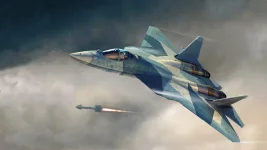- Views: 5K
- Replies: 29
In a major strategic move, Russia has reportedly offered its most advanced S-500 'Prometey' air defence system to India under a government-to-government (G2G) agreement.
The proposal is said to include full Transfer of Technology (ToT) and opportunities for co-production within India, building upon the existing defence relationship strengthened by India's acquisition of the S-400 'Triumf' system.
This offer represents a mutually beneficial arrangement.
For Russia, partnering with India provides a creative pathway to navigate the stringent economic sanctions imposed by Western nations that have restricted its state-owned defence companies from operating freely in the global market.
By enabling India to co-produce and subsequently export the system, Russia can maintain its presence in the international arms trade.
For India, the deal aligns perfectly with its 'Make in India' initiative, aimed at fostering indigenous defence manufacturing and technological self-reliance.
A Generational Leap in Air Defence
The S-500 Prometey, developed by the Russian state-owned enterprise Almaz-Antey, is a next-generation surface-to-air missile system. It marks a significant upgrade over the already formidable S-400.The system is engineered to intercept and destroy a wide array of aerial threats, including intercontinental ballistic missiles, hypersonic cruise missiles, and stealth aircraft. Uniquely, it also has the capability to engage satellites in low Earth orbit.
With an estimated anti-aircraft engagement range of up to 600 kilometres and the ability to track and destroy ballistic missile threats up to 500 kilometres away, the S-500 provides a far-reaching defensive shield.
Its advanced radar and interceptor missile technology, such as the 77T6 missile, allows it to engage targets flying at extremely high altitudes of up to 200 kilometres, offering a robust defence against current and emerging aerospace threats.
Building on Proven Success and Addressing Regional Threats
India's interest in the S-500 follows the successful induction and deployment of its S-400 systems, for which a $5.43 billion deal was signed in 2018. The Indian military has operationalised these systems, referred to locally as the "Sudarshan Chakra," along its sensitive northern and western borders.Reports indicate that during "Operation Sindoor" in May 2025, the S-400 was instrumental in countering aerial threats from the Pakistan Air Force, including modern JF-17 and J-10CE fighter jets.
The push for even more advanced systems like the S-500 is driven by the evolving security landscape in the region.
India faces a complex threat environment, including China's development of hypersonic weapons like the DF-21D and DF-26 missiles and Pakistan's expanding arsenal of ballistic and cruise missiles.
The S-500 would complement India's existing multi-layered air defence network, which includes the S-400 and the indigenous Akash missile systems, creating a more comprehensive and resilient shield.
A Strategic Partnership for Manufacturing and Exports
The proposed co-production model would see India manufacturing key components of the S-500 system, including its complex radar arrays, command-and-control centres, and interceptor missiles.This would not only boost India's domestic defence industry but also position the country as a potential export hub for this cutting-edge technology.
Russia appears to view India as a dependable partner capable of marketing the system to friendly nations in regions like Southeast Asia, the Middle East, and Africa, which may be hesitant to purchase directly from Russia.
This collaborative framework could insulate Russian firms from direct sanctions while helping India expand its own defence export portfolio, which has recently seen success with sales of the Pinaka rocket system to Armenia.
While India remains interested in procuring two additional S-400 squadrons, this new S-500 proposal presents a long-term vision for the India-Russia defence partnership, addressing both immediate security needs and future industrial ambitions.



